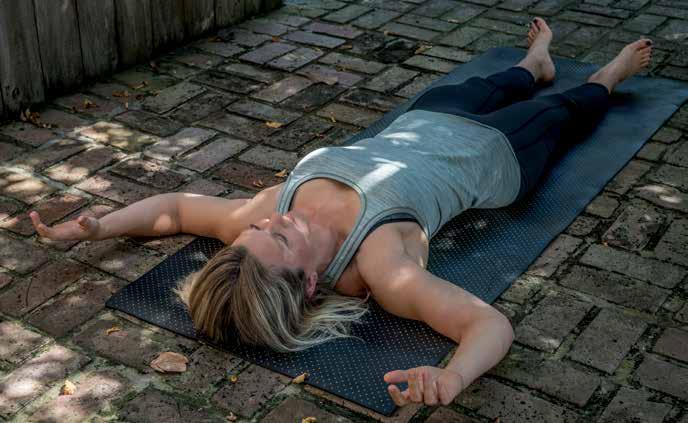
4 minute read
Improve Your Posture to Decrease Pain
If you’re like most Americans, you spend a lot of time sitting. You sit to eat breakfast, you sit in the car on the way to work, you sit at work, you sit while eating lunch and dinner, you sit and watch TV, and you sit to read or browse on your phone. During the last month or two, while you’ve been forced to stay in your home more than ever, you may have increased your sitting time even more. While you’re sitting, you’re most likely doing something with your arms held in front of you, too. You’re holding your phone or a book in front of you, you’re typing on a computer, you’re eating, etc., and if you aren’t careful, these activities can put you in a slouched posture with your shoulders drooping forward, your upper back excessively rounded, and your neck jutting forward. This posture becomes the shape your body holds and even when you stand, you continue to slouch forward.
The problem with this posture is that it inhibits you from properly breathing from your diaphragm, which triggers your nervous system to remain stuck in a state of stress. This forward rolled posture also causes the pectorals major (the largest of the chest muscles) to stay tight, which can lead to tension and chronic pain in the upper back and neck, place excessive pressure on the spinal disks, contribute to headaches, compression of nerves, jaw problems, can limit healthy range of motion in the arms, and even lead to frozen shoulder. The downstream effects of chronically shortened chest muscles can be quite significant, to put it lightly.

SHANNON DEMONSTRATES A QUICK AND EASY WAY TO TEST IF YOU HAVE OVERLY TIGHT CHEST MUSCLES
Here’s a quick, easy test you can try to give you a good idea about whether or not you have overly tight chest muscles:
▪ Lay flat on your back on the floor with your arms straight out to your sides, in line with your shoulders, and your palms facing the ceiling.
▪ Bring your attention to the bottom of your ribcage in your back and engage your core muscles to actively press it down into the floor.
▪ Bend your elbows 90 degrees, in the “touchdown” position.
▪ Notice where the backs of your hands are. If they’re comfortably resting on the floor and you don’t feel any resistance in your chest or the front of your shoulders, then you’re good!
▪ If the backs of your hands are floating above the floor, or you feel a tight or pulling sensation in your chest, then you have some work to do.

To help loosen up those tight muscles, start by massaging them to break up tissue adhesions. Grab a lacrosse ball, a tennis ball, or anything similar you have on hand. Sit up tall, holding the ball in one hand. Extend that arm out to your side, at shoulder height. Then bend your elbow to bring the ball to your chest, but be sure your elbow stays in line with your shoulder. The ball should land just inside your armpit. Stack both of your hands on top of the ball and press it firmly into your muscle. Maintain pressure on the ball and massage your muscle with small, circular motions. “draw” three circles in one direction, then switch directions for three more circles. Next, while continuing to maintain pressure on the ball, pull it toward your armpit three times. Be sure the ball isn’t rolling toward your armpit, but rather sliding across the muscle. Then repeat this process on the other side.
After massaging your muscles with the ball, give them a nice stretch. You can do this by placing your right hand on the wall in front of you at shoulder height, with your arm straight and your fingers pointing to the right. Now twist your body to the left, away from your hand. Hold the stretch for 1-2 minutes and repeat on the left side. Then, retest your pecs and see if your hands are any closer to the floor.

The above massage and stretch routine is a quick way to release your chest muscles and provide temporary relief. It’s not possible, however, to undo 18 hours of poor posture with 5 minutes of massaging and stretching. Do the above routine daily, and after finishing, prioritize a healthy, upright posture and avoid letting those shoulders roll forward. It’s also important that you don’t allow yourself to sit for too long without at least short bouts of movement. For every thirty minutes of static sitting, be sure to get up and move for two minutes. Small changes implemented regularly over a long period of time can make massive improvements.
Consistency is far more beneficial than intensity!





